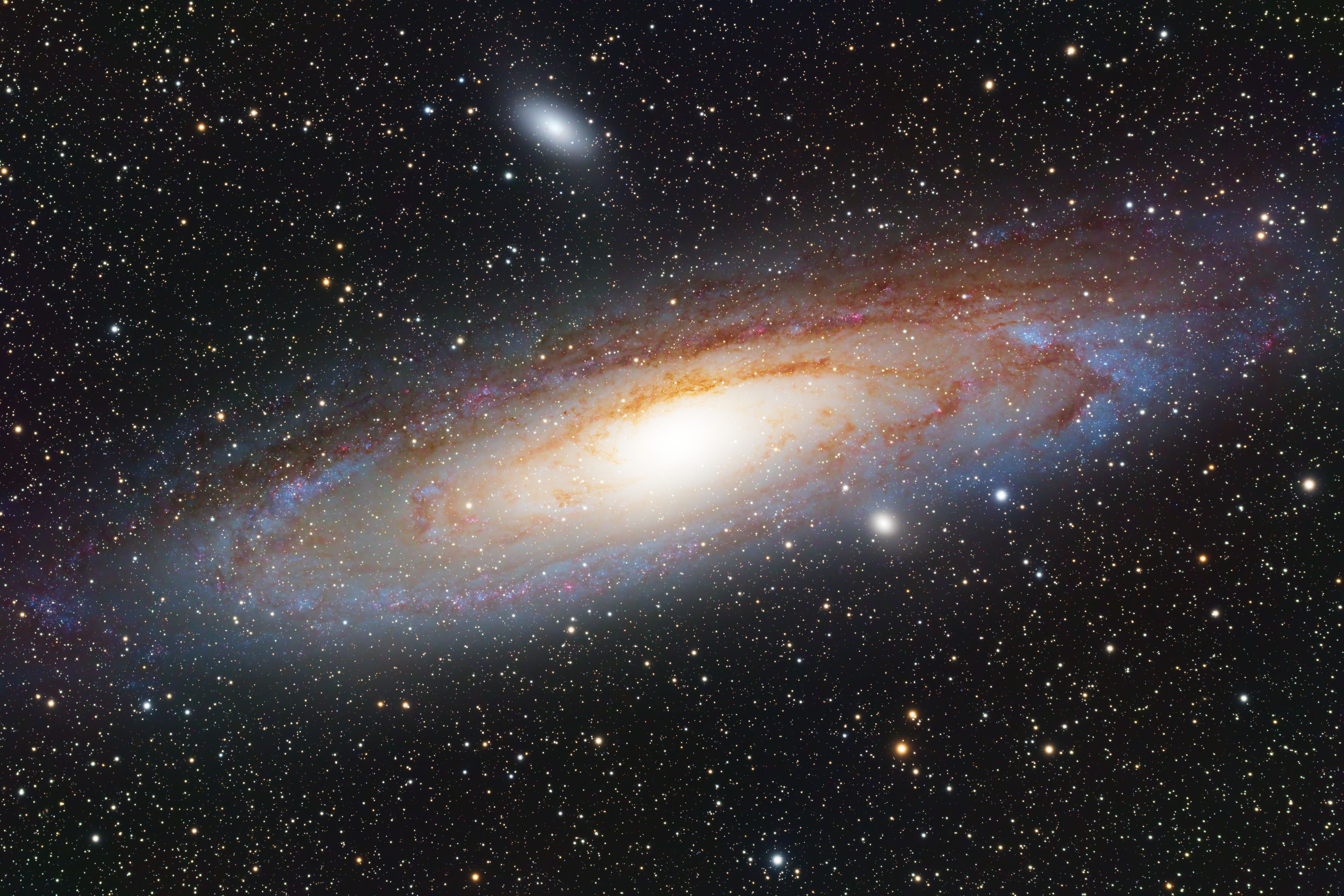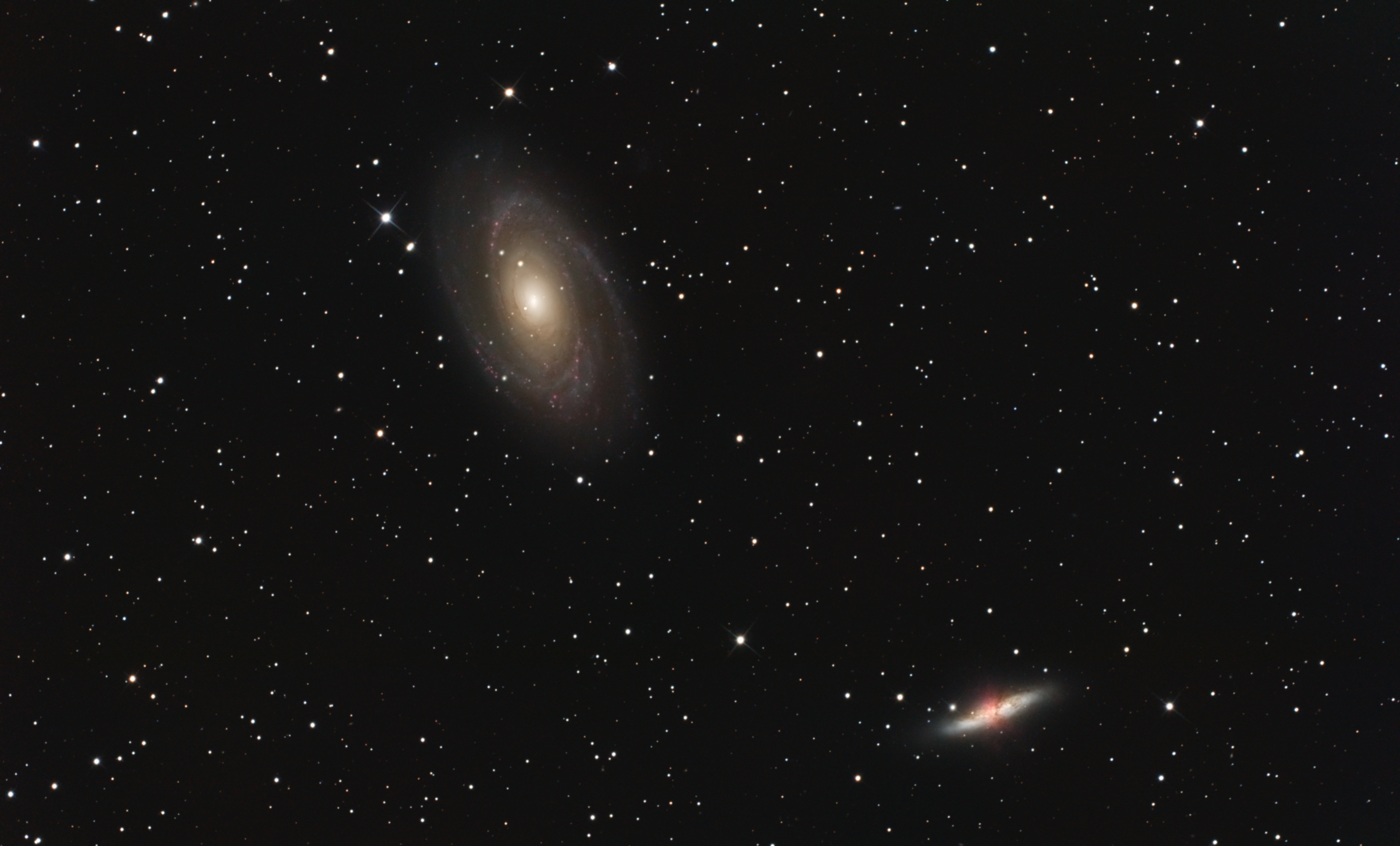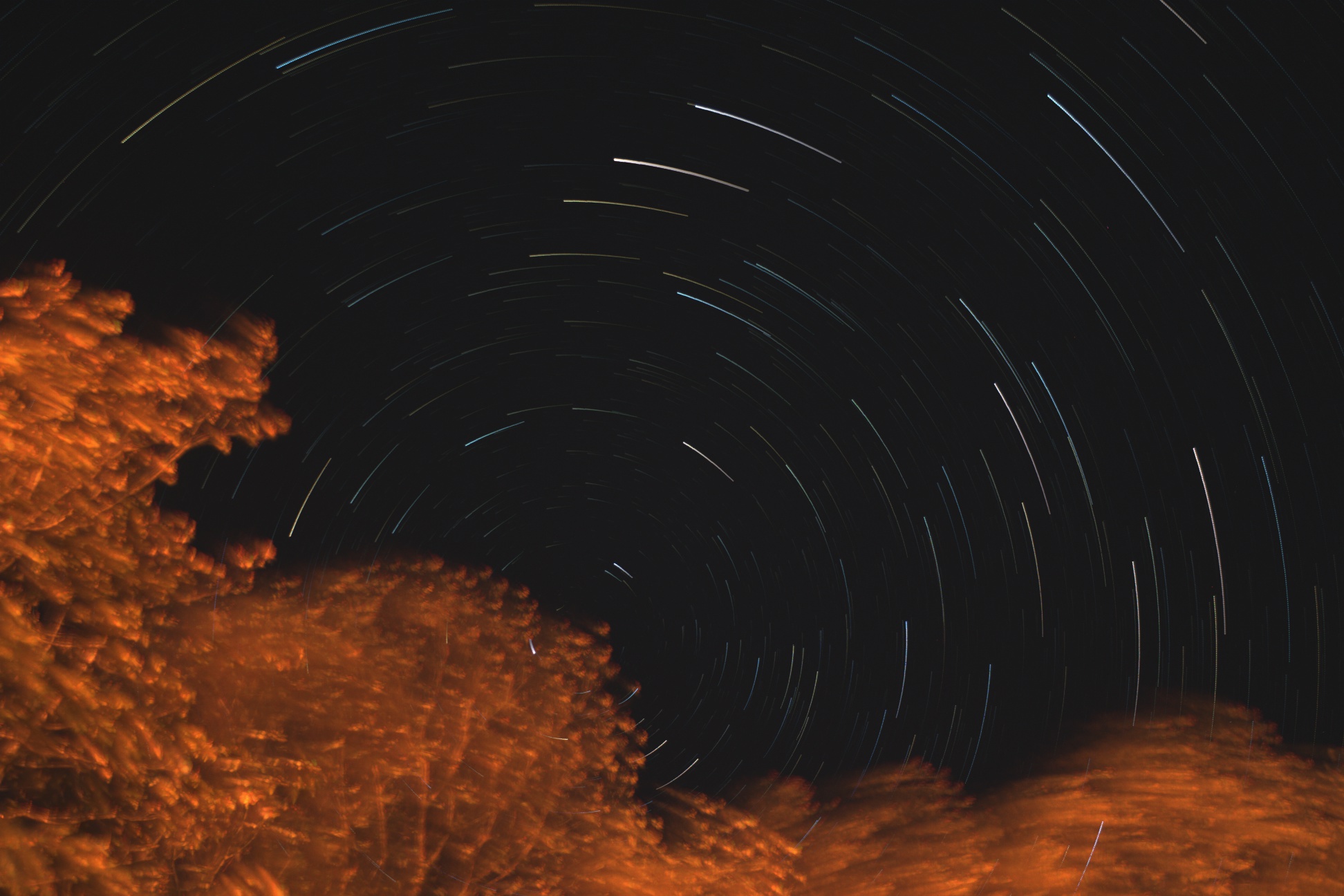„Lift up your eyes to heaven and see. Who has created these things? It is the One who brings out their army by number; He calls them all by name. Because of his vast dynamic energy and his awe-inspiring power, Not one of them is missing (…)”
Middle Eastern poem about the stars, 8th century BCE
Our recent pictures
Sadr Region
Pretty dark nebulae in front of hydrogen clouds
The red/orange parts of the image are made up of hydrogen and sulphur, the bluish parts are oxygen. The black parts are dark nebulae or absorption nebulae which block the light of the stars behind them. You can see such dark clouds with the naked eye as dark patches against the brighter background of the Milky Way!
Triangulum
M33 / NGC 598
Triangulum is the smallest spiral galaxy in the Local Group (us, Andromeda, the Magellanic Clouds and a few more neighbours). It is thought to be satellite galaxy of Andromeda as they are moving towards us together. In 4 billion years all three galaxies might merge into one big elliptical galaxy!
Crescent Nebula
NGC 6888 / Caldwell 27 / Sharpless 105 / WR 136
The star you see in the middle of the nebula is called WR136. Somewhere around 300,000 years ago it ran out of fuel and became a red giant. It threw off some material, gas and dust, into space. Since then its solar wind sends shockwaves through that cloud, forming it, heating it up, causing it to glow and emit all sorts of radiation.
Andromeda Galaxy
M31 / NGC 224
The Andromeda Galaxy is the closest neighboring galaxy, a mere 2.5 million light-years away. It is the only galaxy visible to the naked eye - but just barely. The galaxy is made up of around 1 trillion stars.
Bode's Galaxy & Cigar Galaxy
M81 & M82 / NGC 3031
Bode’s Galaxy is a grand design spiral galaxy which means it has prominent and well-defined spiral arms. It is about 12 million light-years away, and is 90,000 light-years across. Its nucleus is a supermassive black hole, with a mass 70 million times that of our Sun.
2022 Planetary Alignment
Venus, Mars, Jupiter, Saturn and the Moon
In June 2022 all of the planets came into alignment. It is exceedingly rare that all planets would be visible at the same time. They formed a large arc of over 100° on the morning sky.
Articles
Blaze Star
T Coronae Borealis
The Blaze Star is a recurring nova (not a supernova) in the constellation Corona Borealis. It also known as T Coronae Borealis or T CrB for short. A nova event is expected any day now. The star will suddenly brighten up to a similar luminosity as Polaris (North Star). The next occurance is expected in 2104.
How do we take astrophotos?
What kind of equipment is needed to take these pictures
People keep asking us if these pictures are made by us. They are. Really. This is the equipment we use.
Etcetera
Assorted throwaway pancakes
More often than not astrophotos don’t come out the way you planned them to. There are about 200 steps involved in taking a picture, and they all have to be right. Also, often we need to experiment, finetune equipment or the sky is not good enough for long enough to finish a project. These are some examples of failures and experiments.
Star trails
Around the Polaris region
66 minutes of the Earth rotating around its axis.













